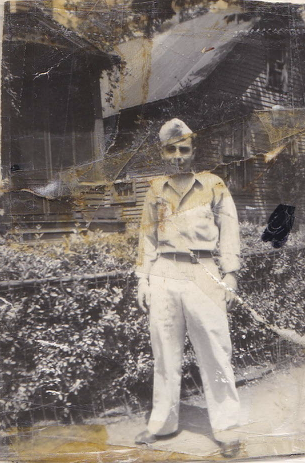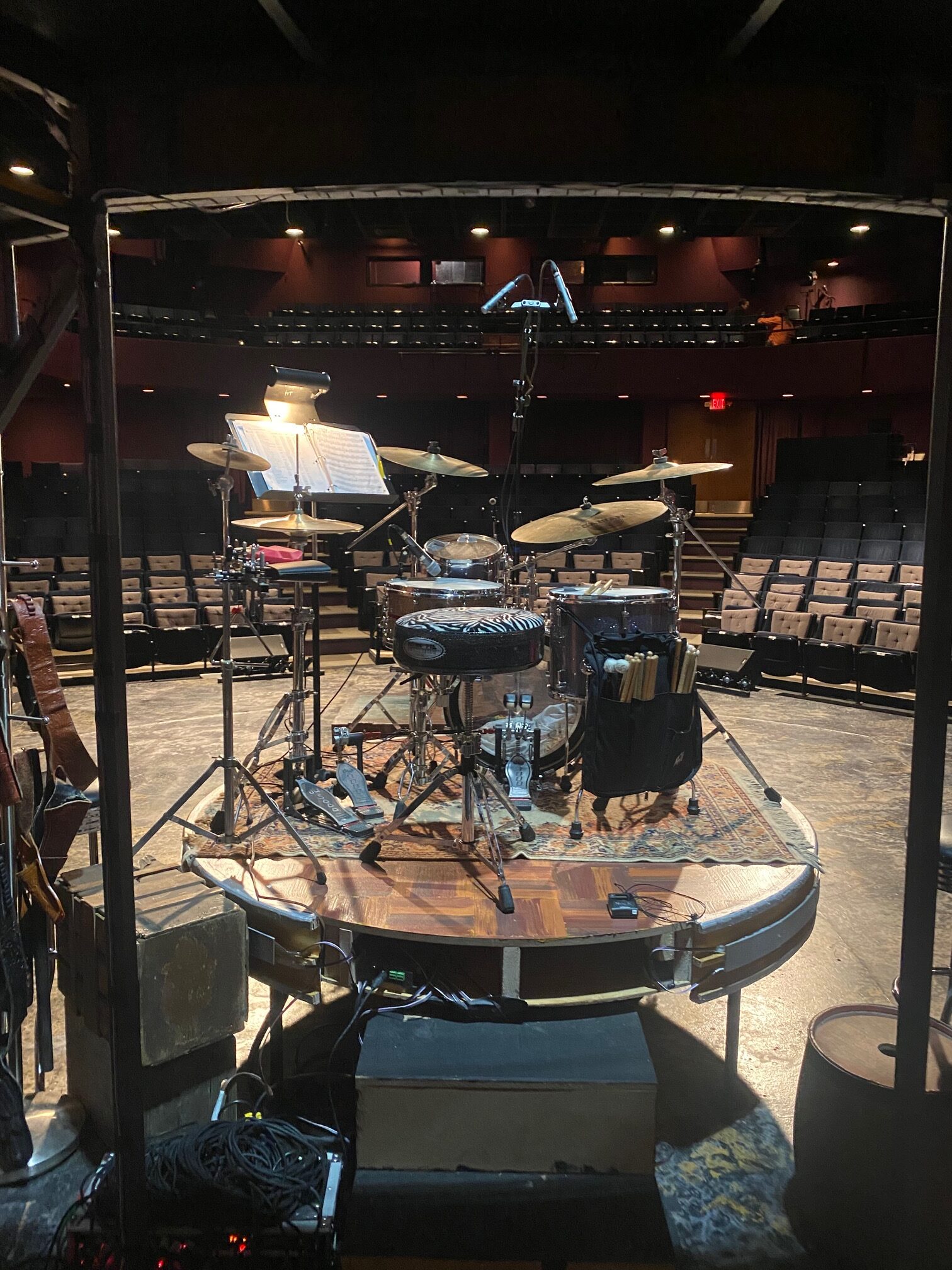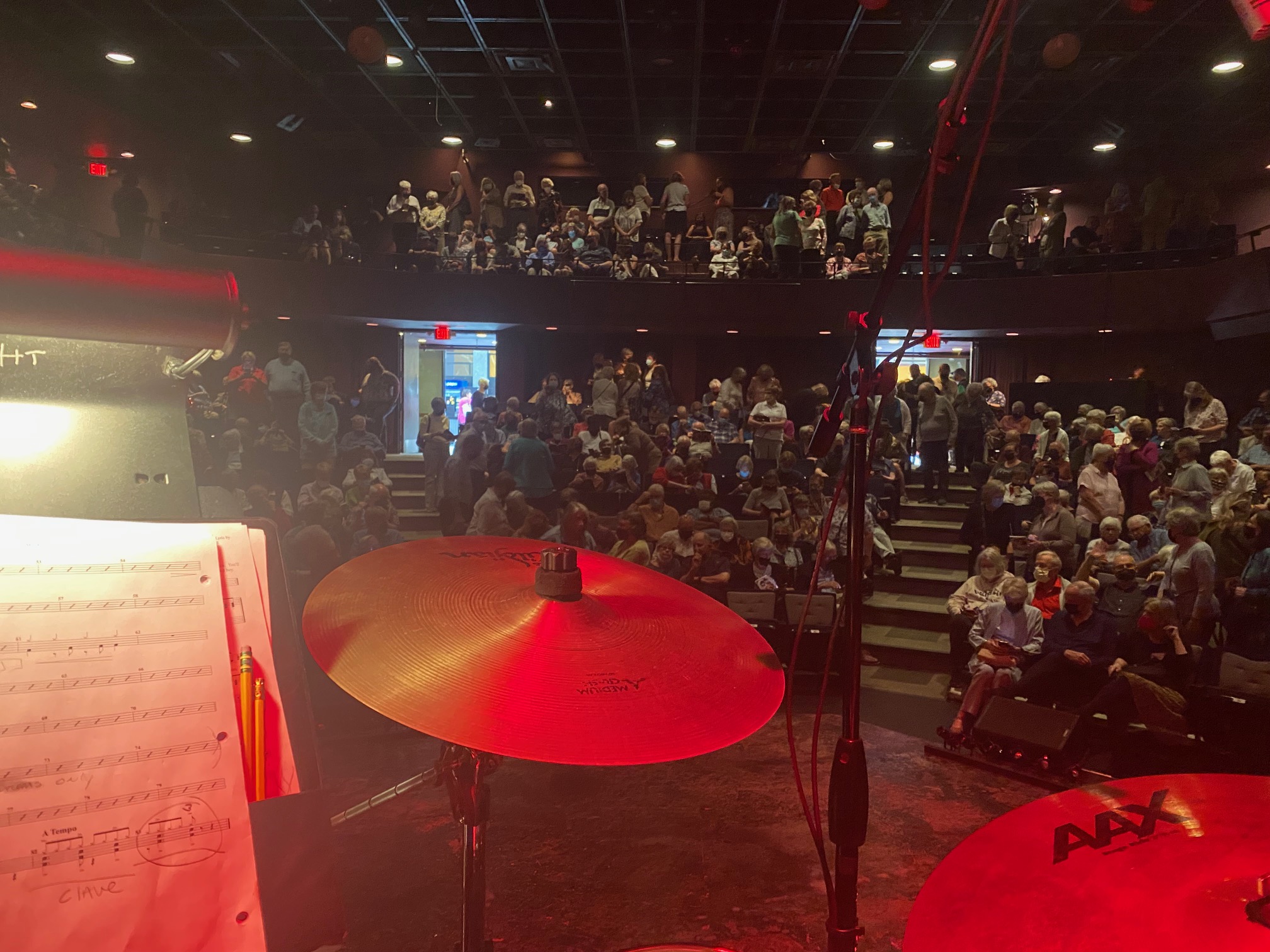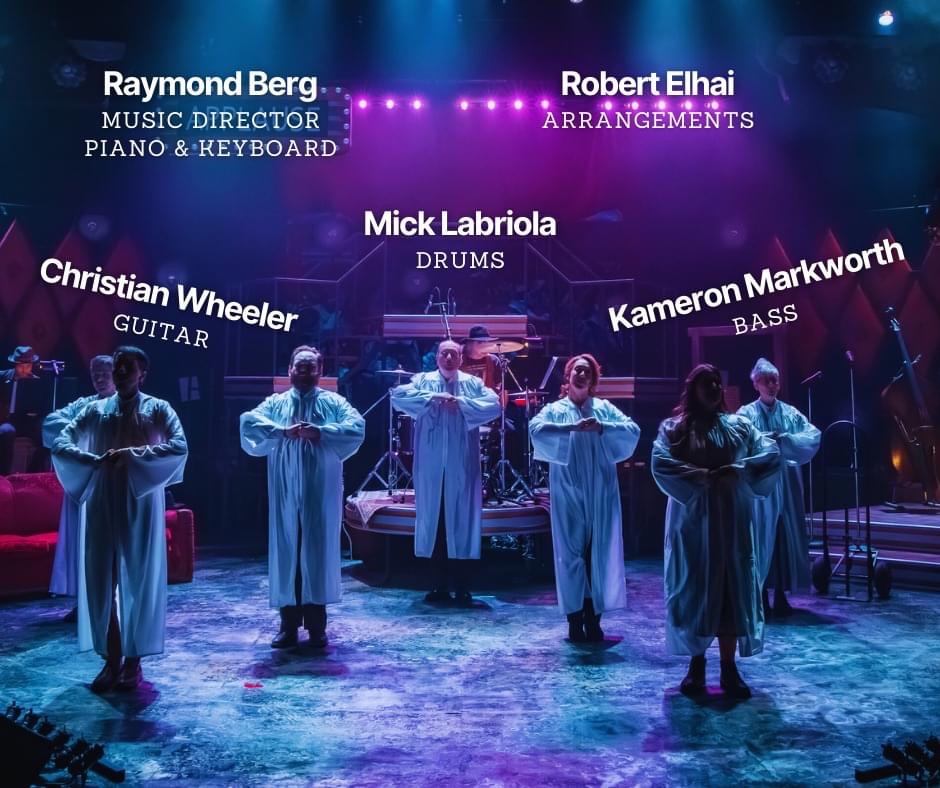Blog
Today I honor my Mike Labriola who served in WWII born in Italy moved to USA and served in the Army in Italy. This traumatic experience unhinged his life and became a never-ending battle of emotional turmoil. I regret that I did not have the opportunity to serve my country during the Vietnam war but could not justify enlisting during this horrific senseless conflict. I was drafted but got a student deferment. Then I almost enlisted failed the drum audition and passed the guitar audition but withdrew the possibility.

Sometimes dramatic events are needed to create something stunning. This beautiful structure of filaments and clouds in the southern constellation of Vela are all that remains of a massive star that died in a powerful explosion known as supernova. This is a small section of a larger image taken using the wide-field camera OmegaCAM at the VLT Survey Telescope (VST). Hosted at ESO’s Paranal Observatory in the Chilean desert, the VST is one of the best telescopes in the world to take large images of the sky in visible light. Even though bright stars populate this image, it’s hard to not be captivated by the pink gaseous clouds filling up the frame. Some tiny, others thicker, the filaments stretch outwards like tentacles. As they intertwine and cling together, an intricate network is formed which mixes with blurred clouds. But how did they come to be like this? Around 11 000 years ago, a massive star exploded as a supernova, ejecting its outer layers. The explosion also generated shock waves which traveled outwards, compressing the gas around the star and creating the intricate network visible in the image. The result of such explosions are called supernova remnants. At 800 light years away from Earth, the Vela supernova remnant is one of the closest known to us.

Daniel Robert Elfman (born May 29, 1953) is an American film composer, singer and songwriter. He came to prominence as the singer-songwriter for the new wave band Oingo Boingo in the early 1980s. Since scoring his first studio film in 1985, Elfman has garnered international recognition for composing over 100 feature film scores, as well as compositions for television, stage productions, and the concert hall.
Elfman has frequently worked with directors Tim Burton, Sam Raimi, and Gus Van Sant, contributing music to nearly 20 Burton projects, including Pee-Wee’s Big Adventure, Batman, Edward Scissorhands, Big Fish, and Wednesday; as well as scoring Raimi’s Darkman, A Simple Plan, Spider-Man and Spider-Man 2, and Doctor Strange in the Multiverse of Madness, and Van Sant’s Academy Award–winning films Good Will Hunting and Milk. He wrote music for all of the Men in Black and Fifty Shades of Grey franchise films, the songs and score for Henry Selick‘s animated musical The Nightmare Before Christmas, and the themes for the popular television series Desperate Housewives and The Simpsons.
Among his honors are four Oscar nominations, two Emmy Awards, a Grammy, seven Saturn Awardsfor Best Music, the 2002 Richard Kirk Award, the 2015 Disney Legend Award, the Max Steiner Film Music Achievement Award in 2017, and the Society of Composers & Lyricists Lifetime Achievement Award in 2022. Elfman was born on May 29, 1953 in Los Angeles, California, to a Jewish family of Polish-Jewish and Russian-Jewish descent. He is a son of Blossom Elfman (née Bernstein), a writer and teacher, and Milton Elfman, a teacher, and the brother of actor, musician, and journalist Richard Elfman. Elfman was raised in a racially mixed affluent community in Baldwin Hills, California, where he spent much of his time at the local cinema discovering classic sci-fi, fantasy and horror films and first noticed the music of such film composers as Bernard Herrmann and Franz Waxman.
more...Ron Levy (born Reuvin Zev ben Yehoshua Ha Levi, May 29, 1951) is an American electric blues musician and composer.
Levy was born in Cambridge, Massachusetts, United States. He primarily plays piano and organ. Levy grew up in Brookline, Massachusetts, and began playing the piano after seeing Ray Charles in concert at age 13. He later switched to playing a Hammond organ. After gaining experience playing in Bostonnightclubs, Levy was hired by Albert King in 1968. After an eighteen-month association, Levy joined B. B. King‘s backing band. Throughout the years, Levy has performed and recorded with a wide range of blues, funk, and jazz musical groups, notably including Roomful of Blues (1983 – 1987) and Ron Levy’s Wild Kingdom (1988 – 2014).
more...Freddie Redd (May 29, 1928 – March 17, 2021) was an American hard-bop pianist and composer. He is best known for writing music to accompany The Connection (1959), a play by Jack Gelber. According to Peter Watrous, writing in The New York Times: “Mr. Redd hung out at jam sessions in the 1950s and played with many of the major figures, Sonny Rollins to Art Blakey, and worked regularly with Charles Mingus. When things got tough, he just moved on, living in Guadalajara, Mexico, and in Paris and London.”
Redd was born and grew up in New York City; after losing his father at the age of one, he was raised by his mother, who moved around Harlem, Brooklyn and other neighborhoods. An autodidact, he began playing the piano at a young age and took to studying jazz seriously when he was 18, after a friend played him a record of “Shaw ‘Nuff” by Charlie Parker and Dizzy Gillespie during his military service in Korea (1946–1949).
more...Eugene Joseph Wright (May 29, 1923 – December 30, 2020) was an American jazz bassist who was a member of the Dave Brubeck Quartet.
Wright was a cornetist at high school and led the 16-piece band Dukes of Swing in his 20s. He was largely self-taught on bass until his early 30s, when he studied privately with Paul Gregory and others. Walter Page was Wright’s idol.
He became more successful at the peak of the swing era, with bandleaders including Count Basie and Erroll Garner. Playing with Billie Holiday and Charlie Parker, after the swing era ended, he demonstrated his versatility in bebop with such musicians as Sonny Stitt as well as in Latin jazz with Cal Tjader.
more...The last day of The 5th and final weekend of The Defeat of Jesse James at the History Theater. Today Sunday May 28th 2023 at 2pm. Featuring music with Raymond Berg, Kam Markworth, Christian Wheeler and mick laBriola.


The Orion Nebula (also known as Messier 42, M42, or NGC 1976) is a diffuse nebula situated in the Milky Way, being south of Orion’s Belt in the constellation of Orion, and is known as the middle “star” in the “sword” of Orion. It is one of the brightest nebulae and is visible to the naked eye in the night sky with apparent magnitude 4.0. It is 1,344 ± 20 light-years (412.1 ± 6.1 pc) away and is the closest region of massive star formation to Earth. The M42 nebula is estimated to be 24 light-years across (so its apparent size from Earth is approximately 1 degree). It has a mass of about 2,000 times that of the Sun. Older texts frequently refer to the Orion Nebula as the Great Nebula in Orion or the Great Orion Nebula.
The Orion Nebula is one of the most scrutinized and photographed objects in the night sky and is among the most intensely studied celestial features. The nebula has revealed much about the process of how stars and planetary systems are formed from collapsing clouds of gas and dust. Astronomers have directly observed protoplanetary disks and brown dwarfs within the nebula, intense and turbulent motions of the gas, and the photo-ionizing effects of massive nearby stars in the nebula.

Leland Bruce Sklar (born May 28, 1947) is an American bassist and session musician. Sklar rose to prominence as a member of James Taylor‘s backing band, which coalesced into a group in its own right, The Section. This group of musicians so frequently supported many of the artists on Asylum Records, both on stage and in the studio, that they became known as Asylum’s de facto house band. Those artists would become the standard bearers of the singer-songwriter era in the 1970s. Since then, Sklar has recorded and toured with artists such as James Taylor, Jackson Browne, Carole King, Linda Ronstadt, Phil Collins, Toto, Lyle Lovett and many, many more. As a group member, session player, or touring musician, Sklar has lent his talents to well over 2,000 albums. In addition, he has contributed to many motion picture and television showsoundtracks. Since 2018, Sklar has been the bassist for The Immediate Family, a group reuniting lifelong friends and most of his former bandmates from The Section.
Leland Bruce Sklar was born May 28, 1947 in Milwaukee, Wisconsin. His mother’s family was from Duluth, Minnesota. His father’s family was from Milwaukee. Originally, the paternal side of the family came from Odesa, Ukraine. Sklar is a Ukrainian surname meaning glazier, a person whose profession is fitting glass into windows and doors.
more...Cecil Bustamente Campbell OD (24 May 1938 – 8 September 2016), known professionally as Prince Buster, was a Jamaican singer-songwriter and producer. The records he released in the 1960s influenced and shaped the course of Jamaican contemporary music and created a legacy of work that would be drawn upon later by reggae and ska artists.
Cecil Bustamente Campbell was born in Orange Street in Kingston, Jamaica, on 24 May 1938. His middle name was given to him by his family in honour of the Labour activist and first post-Independence Prime Minister William Alexander Clarke Bustamante. In the early 1940s, Campbell was sent to live with his grandmother in rural Jamaica where his family’s commitment to the Christian faith, gave him his earliest musical experiences in the form of church singing as well as private family prayer and hymn meetings.Returning to live at Orange Street while still a young boy, Campbell attended the Central Branch School and St. Anne’s School.
more...John Henry Creach (May 28, 1917 – February 22, 1994), better known as Papa John Creach, was an American blues violinist who also played classical, jazz, R&B, pop and acid rock music. Early in his career, he performed as a journeyman musician with Louis Armstrong, Fats Waller, Stuff Smith, Charlie Christian, Big Joe Turner, T-Bone Walker, Nat King Cole and Roy Milton.
Following his rediscovery by drummer Joey Covington in 1967, he fronted a variety of bands (including Zulu and Midnight Sun) in addition to playing with Jefferson Airplane, Hot Tuna, Jefferson Starship, the San Francisco All-Stars (1979–1984), Dinosaurs (1982–1989) and Steve Taylor.
Creach recorded a number of solo albums and guested at several Grateful Dead and Charlie Daniels Bandconcerts. He was a regular guest at the early annual Volunteer Jams, hosted by Charlie Daniels, which exposed him to a new audience that was receptive to fiddle players.
Creach was born in Beaver Falls, Pennsylvania, near the border of Ohio. As a child, he was introduced to the violin by an uncle, and he received both tutoring in the instrument and conservatory training. Creach and his family moved to Chicago in 1935.
more...Aaron Thibeaux “T-Bone” Walker (May 28, 1910 – March 16, 1975) was an American blues musician, composer, songwriter and bandleader, who was a pioneer and innovator of the jump blues, West Coast blues, and electric blues sounds. In 2018 Rolling Stone magazine ranked him number 67 on its list of “The 100 Greatest Guitarists of All Time”.
Aaron Thibeaux Walker was born in Linden, Texas, of African-American and Cherokee descent. His parents, Movelia Jimerson and Rance Walker, were both musicians. His stepfather, Marco Washington (a member of the Dallas String Band), taught him to play the guitar, ukulele, banjo, violin, mandolin, and piano.
more...Andrew Dewey Kirk (May 28, 1898 – December 11, 1992 Newport, KY) was an American jazz saxophonist and tubist who led the Twelve Clouds of Joy, a band popular during the swing era.
He was born in Newport, Kentucky, United States. Kirk grew up in Denver, Colorado, where he was tutored by Wilberforce Whiteman, Paul Whiteman‘s father. Kirk started his musical career playing with George Morrison’s band, but then went on to join Terrence Holder‘s Dark Clouds of Joy. In 1929, he was elected leader after Holder departed. Renaming the band Clouds of Joy, Kirk also relocated the band from Dallas, Texas, to Kansas City, Missouri. Although named the Clouds of Joy, the band has also been known as the Twelve Clouds of Joy due to the number of musicians in the band. They set up in the Pla-Mor Ballroom on the junction of 32nd and Main in Kansas City and made their first recording for Brunswick Records that same year. Mary Lou Williams came in as pianist at the last moment, but she impressed Brunswick’s Dave Kapp, so she became a member of the band.
After their first recordings in 1929–1930, they grew popular as they epitomized the Kansas City jazz sound. In mid-1936, he was signed to Decca and made scores of popular records until 1946. He presumably disbanded and reformed his band during that six-year recording layoff, as his 1929–1930 Brunswick appeared to have sold well enough to stay in the catalog through the period and 1933-34 pressings (with the mid-1930s label variations) have been seen.
In 1938, Kirk and band held the top spot of the Billboard chart for 12 weeks with “I Won’t Tell a Soul (I Love You)”, written by Hughie Charles and Ross Parker, featuring Pha Terrell on vocals. In 1942, Kirk and His Clouds of Joy recorded “Take It and Git”, which on October 24, 1942, became the first single to hit number one on the Harlem Hit Parade, the predecessor to the Billboard R&B chart. In 1943, with June Richmond on vocals, he had a number 4 hit with “Hey Lawdy Mama“.
more...The 5th and final weekend of The Defeat of Jesse James at the History Theater. Tonight Saturday May 27th 2023 at 730pm. Featuring music with Raymond Berg, Kam Markworth, Christian Wheeler and mick laBriola.

The Rosette Nebula (also known as Caldwell 49) is an H II region located near one end of a giant molecular cloud in the Monoceros region of the Milky Way Galaxy. The open cluster NGC 2244 (Caldwell 50) is closely associated with the nebulosity, the stars of the cluster having been formed from the nebula’s matter.
The nebula has been noted to be having a shape reminiscent of a human skull, and is sometimes referred to as the “Skull Nebula.” It is not to be confused with NGC 246, which is also nicknamed the “Skull Nebula.”

more...
Dee Dee Bridgewater (née Denise Garrett, May 27, 1950) is an American jazz singer and actress. She is a three-time Grammy Award-winning singer-songwriter, as well as a Tony Award-winning stage actress. For 23 years, she was the host of National Public Radio’s syndicated radio show JazzSet with Dee Dee Bridgewater. She is a United Nations Goodwill Ambassador for the Food and Agriculture Organization.
Born Denise Eileen Garrett in Memphis, Tennessee, she was raised Catholic in Flint, Michigan. Her father, Matthew Garrett, was a jazz trumpeter and teacher at Manassas High School, and through his playing, she was exposed to jazz early on. At the age of 16, she was a member of a Rock and R&B trio, singing in clubs in Michigan. At 18, she studied at Michigan State University before she went to the University of Illinois at Urbana-Champaign. With the school’s jazz band, she toured the Soviet Union in 1969.
more...More Posts
- Jack DeJohnette Day
- World Music with Kalakan
- Daily Roots with the Creations
- The Cosmos with NGC 4388
- Urbie Green Day
- Benny Carter Day
- World Music with Namgyal Lhamo
- Daily Roots with the Mellotones
- The Cosmos with VFTS 682
- Bassekou Kouyate Day
- Rahsaan Roland Kirk Day
- George Van Eps Day
- World Music with Simon Shaheen
- Daily Roots with Errol Dunkley
- The Cosmos with HCG 87
- Charlie Haden Day
- Abby Lincoln Day
- Buddy Collette Day
- World Music with Walang Sungsang
- Daily Roots with Lyn Taitt & The Jets